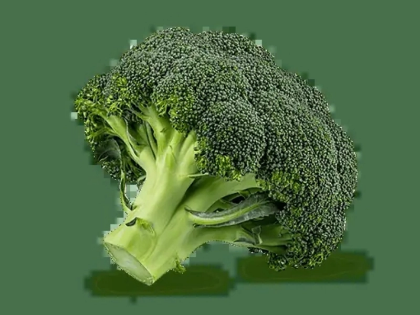Honey: A Natural Remedy for Minor Wounds and Burns
For millennia, honey has been prized not only for its sweetness but also for its amazing medicinal powers. Rich in antioxidants, antibacterial agents, and calming properties, this natural product is a great cure for small burns and cuts. Honey can help with a minor cut, scrape, burn, or other injury and hasten healing. This post will go over how honey functions as a natural cure and provide doable advice on its use.
1. Honey's Healing Agentual Qualities

2. Honey for Wound Healing: Techniques
 Simple and efficient wound treatment with honey is based on First, carefully treat the wound with water and mild soap to be sure it is clear. Using a fresh cloth, pat the spot dry. Then straight onto the cut, spread a thin layer of raw honey. Raw, unprocessed honey has the most health-beneficial qualities; hence it should be consumed. To guard the honey-coated cut from dirt and bacteria, cover it with a sterile bandage or gauze. Change the dressing regularly or if it gets soiled or damp. You might eventually find speedier healing as well as less redness and swelling. Providing both relief and protection, honey can especially help with minor wounds, scratches, and abrasions. See a healthcare provider if needed; always keep an eye on the incision for any indicators of an infection, including redness, drainage, or more discomfort.
Simple and efficient wound treatment with honey is based on First, carefully treat the wound with water and mild soap to be sure it is clear. Using a fresh cloth, pat the spot dry. Then straight onto the cut, spread a thin layer of raw honey. Raw, unprocessed honey has the most health-beneficial qualities; hence it should be consumed. To guard the honey-coated cut from dirt and bacteria, cover it with a sterile bandage or gauze. Change the dressing regularly or if it gets soiled or damp. You might eventually find speedier healing as well as less redness and swelling. Providing both relief and protection, honey can especially help with minor wounds, scratches, and abrasions. See a healthcare provider if needed; always keep an eye on the incision for any indicators of an infection, including redness, drainage, or more discomfort.
3. Honey for Burn Relief
 Whether from heat, chemicals, or sun exposure, burns—from all sources—can be uncomfortable and call for appropriate treatment to heal successfully. A great natural cure for mild burns, honey helps to heal and offers comforting relaxation. After cooling a first-degree burn—that which results from sun exposure—apply a thin layer of honey to the afflicted region under running water. Honey's anti-inflammatory qualities offer a barrier against infection and aid in lowering redness and swelling. In second-degree burns, when blisters could develop, it's imperative to not burst the blisters. Rather, carefully clean the area and apply honey as advised here. To keep the burn covered, use a sterile dressing. Honey not only eases the discomfort but also promotes the regeneration of skin cells, so facilitating faster healing and less scarring.
Whether from heat, chemicals, or sun exposure, burns—from all sources—can be uncomfortable and call for appropriate treatment to heal successfully. A great natural cure for mild burns, honey helps to heal and offers comforting relaxation. After cooling a first-degree burn—that which results from sun exposure—apply a thin layer of honey to the afflicted region under running water. Honey's anti-inflammatory qualities offer a barrier against infection and aid in lowering redness and swelling. In second-degree burns, when blisters could develop, it's imperative to not burst the blisters. Rather, carefully clean the area and apply honey as advised here. To keep the burn covered, use a sterile dressing. Honey not only eases the discomfort but also promotes the regeneration of skin cells, so facilitating faster healing and less scarring.
4. The Science Supporting Honey's Superior Performance
 The efficiency of honey in burn treatment and wound healing has been under much research. Studies have revealed that honey can greatly shorten healing times and enhance results for many kinds of wounds. For example, honey-treated wounds showed faster healing rates than those treated with traditional antiseptics, according to a study written up in the Journal of Wound Care. Honey's antimicrobial qualities, together with its capacity to preserve a moist wound environment, help to explain these favourable effects. Furthermore, the antioxidant properties of honey assist in fighting oxidative stress, therefore impeding the healing process. Consequently, especially for patients looking for natural substitutes, honey is becoming more and more appreciated as a useful addition in wound treatment by medical practitioners.
The efficiency of honey in burn treatment and wound healing has been under much research. Studies have revealed that honey can greatly shorten healing times and enhance results for many kinds of wounds. For example, honey-treated wounds showed faster healing rates than those treated with traditional antiseptics, according to a study written up in the Journal of Wound Care. Honey's antimicrobial qualities, together with its capacity to preserve a moist wound environment, help to explain these favourable effects. Furthermore, the antioxidant properties of honey assist in fighting oxidative stress, therefore impeding the healing process. Consequently, especially for patients looking for natural substitutes, honey is becoming more and more appreciated as a useful addition in wound treatment by medical practitioners.
5. Selecting the Correct Honey Type
Not all honey is made equally; therefore, the sort you choose will greatly affect its potency as a cure. Because raw honey preserves its inherent enzymes, vitamins, and antioxidants and is barely processed, it is the ideal choice for treating burns and wounds. Particularly, manuka honey is quite appreciated for its strong antibacterial qualities, which makes it a great choice for healing wounds. It has become the focus of much study for its therapeutic properties since bees pollinate the Manuka tree in New Zealand. When choosing honey for wound treatment, search for labels saying it is raw and ideally derived from reliable vendors. Steer clear of commercial honey that has been too processed or contains additives since these will reduce its healing qualities.
6. Advice Regarding Honey Use
Though most people find honey to be generally safe, there are several things to be aware of. First, steer clear of honey on deep or severe cuts since they can need for medical attention. Honey shouldn't also be used on wounds in those allergic to bee products. Honey should be avoided totally for newborns under one year of age because of the rare but dangerous botulism risk. Watch the treatment region constantly for any symptoms, including pain, redness, or swelling, that point to negative reactions. Should any worrisome symptoms surface, it is imperative to get medical care right once. These steps will help you to safely benefit from honey as a natural cure for small burns and wounds.
7. Including Honey in Your First Aid Toolkit
Including honey in your first aid box can be a wise and natural approach to improving your approach to wound treatment. Think about having a little container of raw honey on hand for minor burns and cuts. Remember to observe good hygienic standards while using honey: make sure the wound is clean before application and use fresh equipment to scoop the honey. For further advantages, you can also wish to mix honey with other natural medicines, including aloe vera. Particularly for burns, aloe vera's calming qualities are well-known and can enhance the healing effects of honey. Honey has inherent healing qualities; thus, using it in your first aid regimen will help you maximise it and hasten the healing of small burns and cuts.












